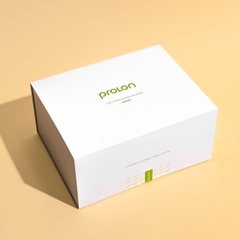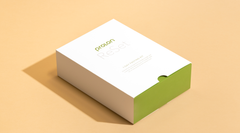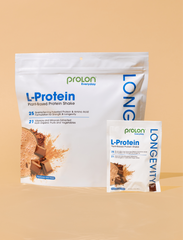
Is NAD+ the New Cure for Aging? Find Out What the Science Says
Key takeaways:
-
NAD+ is a valuable coenzyme produced in the body’s cells to support key biological functions.
-
As we age, our levels of NAD+ decrease, placing our bodies at a higher risk for certain age-related conditions and diseases.
-
The recent popularity of NAD+ infusions and supplement products is based on a theory that increasing our abundance of NAD+ will result in anti-aging effects.
-
NAD+ injections and oral supplements—along with their precursors NR and NMN—have shown promising results in mice and may offer benefits for some people, but human studies remain limited and inconsistent.
NAD and its related compounds have become some of the most talked-about supplements in the longevity space. While early studies suggest they may play a role in supporting cellular function and healthy aging, the evidence is still evolving. So, let’s explore what the science reveals so far, and where more research is still needed.
What is NAD, and why is it linked to longevity?
NAD (nicotinamide adenine dinucleotide) is a molecule your cells make and use every day. It’s essential for energy production, cell communication, repair, and even how genes are turned on or off. NAD exists in two forms that work as a pair:
-
NAD+ (oxidized) is the “empty” form that picks up electrons to help start energy-making and repair processes.
-
NADH (reduced) is the “full” form that carries those electrons into the mitochondria, where they’re used to make energy.
Why does this matter in longevity? Because two enzyme families that support healthy aging need NAD+ to function: sirtuins (which help with stress resistance, metabolism, and inflammation) and PARPs (which help repair DNA). These enzymes draw from the same NAD pool, and NAD levels naturally decline with age - one reason scientists are actively exploring ways to maintain or restore them.
Can supplementing NAD+ or its precursors actually combat aging?
NAD is essential to many longevity-related processes inside cells, which is why supplements and infusions of NAD+ or NADH have attracted attention. Because NAD levels decline with age, the idea is that “restocking” them, either orally or intravenously, might counteract age-related changes. In practice, some studies show supplementation can raise NAD+ levels in the bloodstream and even in select tissues, and many regular users report feeling more energized, focused, or physically capable on them.
Where more research is needed
Where the evidence becomes uncertain is at the outcome level. Demonstrating higher NAD+ in blood or tissue is not the same as proving meaningful improvements in aging outcomes. Human clinical data directly linking NAD+ or NADH supplementation to consistent, durable gains in healthspan or lifespan remain limited and mixed. The more promising findings that report things like improved physiological function or certain healthspan markers come largely from preclinical studies in mice; studies with humans, however, are still less robust, and these findings tend to offer conflicting evidence about whether NAD elevation itself is the specific driver of any observed benefit.
What about NR and NMN?
Other NAD-related supplements include NR (nicotinamide riboside) and NMN (nicotinamide mononucleotide), precursors the body can convert into NAD+. In mice, these have been shown to improve glucose regulation, mitochondrial function, and muscular, vascular, and cognitive performance in the context of aging, obesity, and Alzheimer’s disease. Human trials generally find them safe and sometimes capable of raising NAD+ levels in certain tissues. Reliable increases across all tissues, as well as clear evidence that these increases translate into meaningful improvements for human healthspan, have yet to be demonstrated. If you’re interested in following these clinical developments, or thinking about incorporating any NAD precursor into your routine, it’s always best to consult with your medical provider first.
Prolon offers comprehensive, clinically-validated longevity tools
While NAD precursors are being explored for their potential to support healthy aging, Prolon offers something more established: a clinically validated nutrition program with proven human results. Though Prolon hasn’t yet been studied for its effect on NAD levels, its benefits are well documented in human trials.
Developed by leading longevity scientists, our 5-Day Fasting Mimicking Diet (FMD) is backed by more than 40 human trials to reduce biological age by an average of 2.5 years, support metabolic and cardiovascular biomarkers, activate autophagy (the body’s natural cellular cleanup process), and promote visceral fat loss while protecting lean muscle mass. It’s also the only nutrition program patented for longevity through cellular rejuvenation to deliver whole-body benefits that last, helping cells function more like their younger selves.
True longevity also comes from a way of living that supports your body at the cellular level, day after day, and year after year. The Longevity Diet, developed by Dr. Valter Longo after decades of studying the nutrition and lifestyle habits of the world’s longest-living populations, provides that foundation. It emphasizes nutrient-rich, mostly plant-based eating, moderate protein intake to preserve muscle without overstimulating aging pathways, and periodic prolonged fasting complemented by daily intermittent fasting. Together, these practices have been linked to better metabolic health, reduced disease risk, and a longer healthspan. All of Prolon’s nutrition solutions are based on these principles, and designed to make following this lifestyle simple and sustainable, with products like:
-
Fasting Bars: Extend the fasting, fat-burning state and curb hunger with plant-based nutrition
-
L-Protein: Get optimal daily protein without triggering pro-aging pathways
-
5:2 Fasting Bundle: Easily incorporate intermittent fasting into your weekly routine without any prep or guesswork
When used together, these tools turn the science of The Longevity Diet into an easy-to-follow lifestyle, supporting measurable and lasting results over time.
Be curious, but stay grounded in science
At Prolon, we support innovation and exploration in the longevity space, but with any new health trend, it’s important to ask: what’s been proven by science for people like me? While NAD definitely has some proven clinical and real-world benefits, it is still an area where the science is evolving, and human trials have yet to confirm whether raising NAD translates into real gains in healthspan or longevity. For a scientifically validated step towards living a healthier, more vibrant, and longer life, Prolon offers a rare combination of clinical rigor and real-world results.
Sources:
National Library Of Medicine. National Center For Biotechnology Information. “Age-related NAD+ decline.” Website.
National Library Of Medicine. National Center For Biotechnology Information. “Dietary Supplementation With NAD+-Boosting Compounds in Humans: Current Knowledge and Future Directions.” Website.
National Library of Medicine. National Center For Biotechnology Information. “Fasting-mimicking diet and markers/risk factors for aging, diabetes, cancer, and cardiovascular disease.” Website.
National Library of Medicine. National Center For Biotechnology Information. “Fasting-Mimicking-Diet does not reduce skeletal muscle function in healthy young adults: a randomized control trial.” Website.
National Library Of Medicine. National Center For Biotechnology Information. “NAD+ metabolism and its roles in cellular processes during ageing.” Website.
National Library Of Medicine. National Center For Biotechnology Information. “Precursor comparisons for the upregulation of nicotinamide adenine dinucleotide. Novel approaches for better aging.” Website.
National Library Of Medicine. National Center For Biotechnology Information. “The Role of NAD+ in Regenerative Medicine.” Website.
Nature Communications. “Fasting-mimicking diet causes hepatic and blood markers changes indicating reduced biological age and disease risk.” Website.












